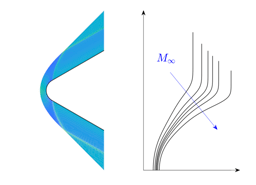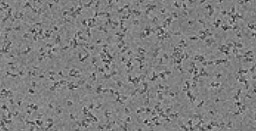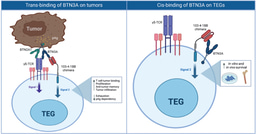Unpacking the Unequal Impacts of Fire Smoke Emissions
Published in Social Sciences, Earth & Environment, and Economics

Understanding the Distributional Inequities of Fire Smoke
Wildfires have become increasingly severe each year, a trend that’s expected to continue. Climate change is contributing to warmer springs, longer and hotter summers, and drier landscapes, leading to extended wildfire seasons, more frequent fires, and larger burned areas. Beyond the physical destruction—of which the recent Eaton Fire of Los Angeles County so devastatingly reminded us—wildfire smoke contains air pollutants that pose significant health risks. Unlike many other air pollution sources, fires (1) cannot be strategically sited to influence downwind exposure, and (2) create smoke events where community preparedness can help reduce exposure.
In our study, published in Communications Earth & Environment, we examined the distributional impacts of smoke from wildfires and prescribed burns, a key wildfire mitigation strategy. We analyzed how fire smoke exposure varies across social vulnerability indicators to determine if, like anthropogenic sources of air pollution, fire emissions contribute to environmental inequities in the U.S. Additionally, we assessed whether differences in susceptibility—independent of exposure—lead to fewer health damages for less vulnerable populations and greater damages for more vulnerable ones.
While the results are nuanced, we found that vulnerable communities in the U.S. face both higher exposure to and health impacts from fire smoke. Notably, senior citizens, who make up 16% of the population, bore a staggering three-fourths of the smoke damages. Although many other social vulnerability factors are more prevalent among younger people, inequities within age groups are evident. For example, when comparing individuals of comparable age, wildfire smoke damages were greatest for Native American persons, while prescribed burn smoke damages were highest for Black persons.
Our findings highlight critical disparities and provide a roadmap for policymakers, disaster response planners, and community leaders seeking to mitigate wildfire-related air pollution and its disproportionate health impacts. By shedding light on the disproportionate impacts of fire smoke on vulnerable communities, our research underscores the urgent need for targeted interventions. We hope these findings inspire actionable change to protect those most at risk as wildfire seasons grow longer and more severe. Potential solutions include:
- Improve real-time air quality monitoring and increase public outreach through trusted community leaders.
- Create clean air spaces in locations easily accessible to vulnerable populations, such as senior centers in lower-income areas.
- Coordinate the distribution of N95 masks before and during smoke events, especially to outdoor workers and those without safe indoor spaces.
Unraveling the Research: Surprises & Insights Along the Way
This research featured several surprising findings, followed by explanations upon further investigation. Throughout the process, we had expectations about our findings. For instance, prior studies suggested that fire smoke exposure would likely correlate positively with certain vulnerability attributes. However, we did not anticipate the strikingly strong positive correlations between fire smoke and social vulnerability (see Fig. 2a of the paper for social vulnerability versus smoke exposure).
Further analysis revealed that the western U.S. (heavily affected by wildfire smoke) and the southeastern U.S. (predominantly exposed to prescribed burn smoke) have higher proportions of vulnerable populations compared to the Midwest and Northeast. This broad, national scope influenced our observed correlations between smoke exposure and social vulnerability, though similar trends appeared within some regions and states.
A key example emerges when shifting from assessing smoke exposure to health impacts. This transition, a key aspect of our integrated assessment model, distinguishes between who breathes the smoke (exposure) and who suffers the greatest adverse effects as a result (health damages). Notably, we found that relative impacts decreased for the most vulnerable populations while increasing for less vulnerable groups. One surprising discovery was that senior citizenship—one of 15 social vulnerability indicators—was negatively correlated with many others, including but not limited to the percentage of non-White residents in a census tract.
One key takeaway from our research is that senior citizens, who are disproportionately White, accounted for 75% of the health damages from fire smoke in 2017 due to their higher baseline mortality risk. Because this group is less vulnerable across many other dimensions, overall damages for the most socially vulnerable groups appear lower. However, within age groups, disparities persist. While smoke damages are greatest for White individuals across all age groups, wildfire smoke damages are greatest for Native American individuals and prescribed burn smoke damages are highest for Black individuals within age groups (see Fig. 6b of the paper for damages per capita by age group and race/ethnicity). We encourage readers to explore our paper for deeper insight.
Navigating the Complexity of Indices for Quantitative Research
Our use of the Social Vulnerability Index (SVI) highlights both the advantages and challenges of employing multi-criteria indices in quantitative analysis. Designed to assess a community’s ability to withstand and recover from disasters, the SVI provides a concise, high-level summary through percentile ranks. By incorporating 15 different variables, the index offers a more comprehensive picture of social vulnerability than any single indicator alone.
However, as we discuss in our manuscript, this approach also presents significant challenges. The implications of individual indicator variables can vary widely, and their relationships with one another are complex. For example, the tract-level percentages of (1) senior citizens and (2) people of color are both associated with increased per capita damages, yet these variables are negatively correlated. In this case, the influence of senior citizenship outweighs that of racial composition, leading to an instance of Simpson’s Paradox. This statistical phenomenon occurs when trends within groups differ from overall trends due to confounding factors—in this case, age.
Without a careful dissection of the SVI, critical inequities can be easily overlooked. This complexity is further compounded by broader social factors, including those that shape individuals’ ability to live long, healthy lives. People who reach older ages may have faced fewer hazards in the past but become more vulnerable to air pollution over time. Ultimately, a nuanced understanding of what indices capture—and the factors they may obscure—is essential when applying them in quantitative research.
Challenges & Opportunities for Developing High-Resolution Air Pollution Impact Modeling
Integrated assessment models provide a powerful framework for quantifying the monetized damages of air pollution. However, prior research has shown that inequities can be masked at coarser spatial scales. To address this limitation, we developed the census tract-level AP4T model, capable of assessing over 70,000 fire smoke sources and receptors—an order of magnitude more than its widely used predecessors in the APEEP series. By leveraging a reduced-complexity air quality modeling framework, AP4T offers greater computational efficiency and accessibility compared to other methods in the field.
However, increasing spatial resolution comes with a tradeoff: the model becomes significantly more computationally demanding. While machines with sufficient RAM and storage can run AP4T, many researchers (including ourselves) have faced barriers due to its high computational requirements. Moving forward, we hope future research efforts will enhance both accuracy—addressing limitations outlined in our paper—and usability, ensuring that high-resolution air pollution impact modeling becomes more accessible. The model and its technical appendix, which details inputs and modeling components, are available at https://nickmuller.tepper.cmu.edu/APModel.aspx.
Follow the Topic
-
Communications Earth & Environment

An open access journal from Nature Portfolio that publishes high-quality research, reviews and commentary in the Earth, environmental and planetary sciences.
Related Collections
With Collections, you can get published faster and increase your visibility.
Geology of the Moon
Publishing Model: Hybrid
Deadline: Jan 31, 2026
Drought
Publishing Model: Hybrid
Deadline: Dec 31, 2025






Please sign in or register for FREE
If you are a registered user on Research Communities by Springer Nature, please sign in